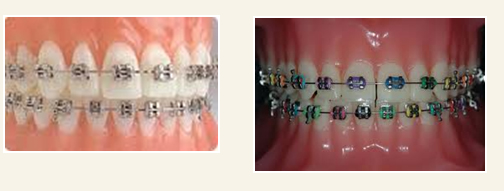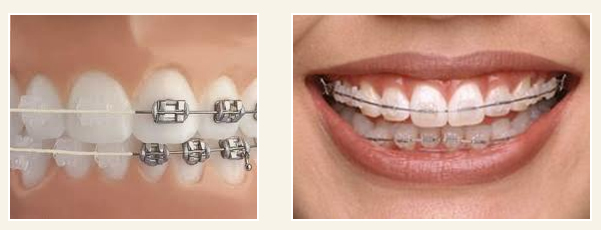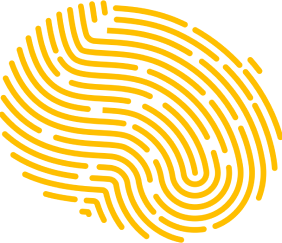Orthodontics
Mal alignment of the teeth are the primary concern of people these days primarily because of the aesthetic look.
This treatment helps to align all the teeth in a proper position. This takes care of your functional as well as your aesthetic concerns.
It is performed using brackets and braces.
This treatment helps to align all the teeth in a proper position. This takes care of your functional as well as your aesthetic concerns.
It is performed using brackets and braces.
Time
Orthodontic treatment requires minimum of 8-10 months to align the teeth.
In some cases requiring only aligning of teeth with latest treatment modalities , duration can be shortened to 3-6 months.
In some cases requiring only aligning of teeth with latest treatment modalities , duration can be shortened to 3-6 months.
Cost
1.You have many varieties of brackets.
2.Like metal brackets, ceramic brackets, lingual brackets, invisalign, clearpath
3. Cost depends on the type of bracket and treatment
2.Like metal brackets, ceramic brackets, lingual brackets, invisalign, clearpath
3. Cost depends on the type of bracket and treatment
Metal

Ceramic

Inman Aligners


FAQs
If you are young and your teeth are misaligned but in the perfect shape and colour, then braces or orthodontic treatment is the right path for you. However, if you are unhappy with the shape or colour or texture of your teeth then looking at cosmetic dentistry is a sensible option. Even in such cases, braces can be used for pre-aligning the teeth where required. Here; pre aligning with use of recent advances like Inman aligners can considerably shorten treatment time.The basic principle to follow here would be – ‘Treat young patients Idealistically and treat adult patients Realistically’.
Orthodontic treatment requires minimum of 8-10 months to align the teeth. In adult patients , where minor corrections for only front teeth are targeted, 6- 7 months should be adequate. With use of Inman Aligners the treatment span can be shortened to around 12-16 weeks.In the first visit the braces will be placed ,followed by monthly recalls to monitor and guide the progress.
You have many varieties of brackets. The cost ranges from 25000 to 200000 INR.
Metal – Rs. 35,000
Ceramic – Rs. 45,000
Lingual – Rs. 1,25,000
Invisable Aligners – Rs. 1,20,000
Invisalign – Rs. 3,00,000
Inman Aligners – 70000 INR
Metal – Rs. 35,000
Ceramic – Rs. 45,000
Lingual – Rs. 1,25,000
Invisable Aligners – Rs. 1,20,000
Invisalign – Rs. 3,00,000
Inman Aligners – 70000 INR
Not necessarily… It depends on the position of your jaws and your expectation from the treatment. Your dentist will take a series of x rays to determine whether removal of teeth are a must.
Slight discomfort may be experienced for the first week with the brackets if present till the lips and teeth adjust around it.
Well, with the advancements in dentistry; that is a non-entity. One can opt for ceramic /clear brackets or even bracketless systems (consisting of only series of trays) such as Clearpath or Invisalign.
Spacing
Diastema is a space or gap between two teeth. The term is most commonly applied to an open space between the upper incisors (front teeth).
Cause
Diastema occurs when there is an unequal relationship between the size of the teeth and the jaw. It is sometimes caused or exacerbated by the action of a labial frenulum (the tissue connecting the lip to the gum),by tongue thrusting or spreading of teeth due to periodontal diseases.
Treatment
There are two options of treating diastema or spacing in between the teeth:
First involves orthodontically moving the teeth(braces) and this line of treatment usually requires 10-12 months for correction.
Second involves placement of porcelain veneers or metal free crowns.
Porcelain veneers are eggshell thin pieces of porcelain applied directly over the tooth structure after some initial tooth preparation. Once the porcelain veneers are fused to the underlying tooth structure, they can reestablish the look of straight teeth and can close spaces without the use of braces. Additionally, the color, shape, and size of the teeth can be altered to the wishes of the patient for overall smile enhancement. And the greatest advantage of porcelain veneers is that the treatment can be completed in only two painless visits.
First involves orthodontically moving the teeth(braces) and this line of treatment usually requires 10-12 months for correction.
Second involves placement of porcelain veneers or metal free crowns.
Porcelain veneers are eggshell thin pieces of porcelain applied directly over the tooth structure after some initial tooth preparation. Once the porcelain veneers are fused to the underlying tooth structure, they can reestablish the look of straight teeth and can close spaces without the use of braces. Additionally, the color, shape, and size of the teeth can be altered to the wishes of the patient for overall smile enhancement. And the greatest advantage of porcelain veneers is that the treatment can be completed in only two painless visits.
FAQs
Gaps between the teeth can be closed by either pulling the teeth together with braces orthodontically or cosmetically by placing porcelain laminates, lumineers or metal free crowns. If only spacing is a problem then either of it is a good option; however if teeth are malformed or missing resulting in the presence of gaps then directly going in for cosmetic correction is a more viable option.
It is an artistic method to align your teeth and beautify your smile. In this we design the crowns so as to close the gaps between the teeth. Laminates and Lumineers are relatively non invasive methods of achieving gap closure along with change in colour and shape of the teeth when the teeth are perfectly aligned.
Orthodontically correcting the teeth requires 7-8months while cosmetic correction is achieved within 7-10 days.
The cost depends on the type and quality of materials involved. You can visit the treatment charges section and crowns/dental laminates sections for further information.
As we numb the tissues and then the teeth during the procedure and you will be leaving the dental clinic with temporaries there is no fear of pain either during or after the procedure.
All cosmetic treatments involve CAD CAM technology and metal free materials (porcelain/zirconia) that ensure precise fit and translucency (naturality).
Cosmetic dentistry requires thorough knowledge of the esthetic principles, a keen eye for esthetics and knowledge of handling superior materials such as rubber base, light body, bonding cements etc that play a key role in the outcome. Also, the art involves expertise in methodical sequencing of treatment to reduce the no. of visits and providing esthetics without compromising the integrity of the tooth. Hence, a Master’s degree and high experience of the concerned dentist are always recommended.
YES. The crowns/ laminates are permanently bonded onto the teeth.
Deep Bite
Traumatic occlusion (or a bad bite) is the result of misalignment of the teeth and jaws, often caused by genetics, but can also be due to teeth crowding, bad, worn or decayed teeth, and poor or failing dental work and missing teeth, particularly missing back teeth. Habits such as thumb sucking, clenching or grinding teeth (bruxism) can also contribute to causing such problems.
Missing back teeth in an adult can create or exacerbate a ‘deep bite’ leading to collapse of the bite and lower face, giving a more aged appearance.
Out of all the bite disorders, a deep bite is the most detrimental to the teeth and health of the jaw joints. It also has an impact on facial aesthetics with wearing of the behind teeth reducing the facial height and increasing wrinkle lines and aged appearance.
Although it may appear as merely an aesthetic issue, a bad bite is in fact far more serious; it can lead to significant damage to the teeth and gums as well as headaches and temporomandibular joint (TMJ) disorders.
A deep bite is a condition where your upper front teeth bite too deeply over the lower front teeth.
Missing back teeth in an adult can create or exacerbate a ‘deep bite’ leading to collapse of the bite and lower face, giving a more aged appearance.
Out of all the bite disorders, a deep bite is the most detrimental to the teeth and health of the jaw joints. It also has an impact on facial aesthetics with wearing of the behind teeth reducing the facial height and increasing wrinkle lines and aged appearance.
Although it may appear as merely an aesthetic issue, a bad bite is in fact far more serious; it can lead to significant damage to the teeth and gums as well as headaches and temporomandibular joint (TMJ) disorders.
A deep bite is a condition where your upper front teeth bite too deeply over the lower front teeth.
Why Treat Deep Bite?
Unlike other diseases/dental conditions, which have an immediate symptom of pain, Traumatic occlusion and/or Deep bite is more of a silent disease like cancer in that it results in a series of small seemingly insignificant changes which occur slowly over a period of time resulting in irreversible changes recognized first as an all of a sudden generalized sensitivity when most of the damage has already occurred.
Features of Deep Bite
Initial stages : one can notice wear of the lower front teeth seen as a flattening of the surface, craze lines/thin fracture lines in the front teeth along with accumulation of deposits and bleeding of gums mainly in the lower front teeth. As the upper teeth bite totally over the lower teeth, the function of your teeth will be poor especially when chewing food.
If left to progress, the top edge of the lower teeth will often wear very early and extensively and sometimes even upper teeth wear, resulting in generalized sensitivity. Sudden Chipping off of teeth, regular bleeding of gums noticed esp. while brushing are seen. Also with time, the gum behind the upper teeth and in front of the lower teeth can get damaged due to the top edges of teeth biting into the gums called gingival recession. Your smile can also be affected by this condition, as the upper teeth can wear on their chewing surfaces overtime, gums look unaesthetic. This can be a very serious issue and often leads to loss of the front teeth. Bad breath may be noticed as a side effect of the gum disease and deposits in the teeth.
Advanced stage : causes excessive wear to your teeth presenting as generalized sensitivity in all teeth and pain in severely affected teeth, gingival recession and TMJ pain (pain in jaw joints and muscles).
Treatment of Deep Bite by Cosmetic Crown
A deep bite, even in adults, can be corrected these days with one of the many effective restorative treatment options.
Treatment involves raising the bite to establish a correct bite by placing crowns on the behind teeth and replacing any missing teeth so that the chewing forces are distributed equally.
If front teeth are already damaged [worn /chipped], metal free crowns or laminates may be placed for esthetics. Simple gum cleaning (scaling) may be required.
Treatment involves raising the bite to establish a correct bite by placing crowns on the behind teeth and replacing any missing teeth so that the chewing forces are distributed equally.
If front teeth are already damaged [worn /chipped], metal free crowns or laminates may be placed for esthetics. Simple gum cleaning (scaling) may be required.
In advanced stages; where patients come with pain, generalized sensitivity and gum recession (chewing away of gums); along with crowns on the back teeth, those teeth with pain may require root canal therapy and the front teeth will also require crowns. Additionally, gum surgery would be required where indicated.
Cost of Treatment
The cost of the treatment depends on the quality of crowns we choose to increase the bite and number of teeth involved in raising the bite.
Night guard (a protective template) is given more as a preventive therapy for monitoring in the earlier stages, when no damage has occurred as yet. Though it does not treat, it significantly delays the progress of the disease and prevents jaw joint (TMJ) and muscle pain from occurring. When detected at a younger age, before attrition of the teeth has occurred, it can be corrected by moving the teeth to a stable correct position using braces and/or anterior bite plane also called Orthodontic treatment.
Night guard (a protective template) is given more as a preventive therapy for monitoring in the earlier stages, when no damage has occurred as yet. Though it does not treat, it significantly delays the progress of the disease and prevents jaw joint (TMJ) and muscle pain from occurring. When detected at a younger age, before attrition of the teeth has occurred, it can be corrected by moving the teeth to a stable correct position using braces and/or anterior bite plane also called Orthodontic treatment.

FAQs
But my lower teeth do not touch upper teeth do I still have deep Bite?
When you have a deep bite condition, your teeth may not touch in resting position but when you are eating the lower teeth hits the upper teeth constantly transferring all the pressure from your lower teeth to the upper teeth and vice- versa then to the gums and later to the TMJ.
Solution to this is bite rise using orthodontic treatment or cosmetic crown, where the crowns are designed in such a way that the bite is re-organised so that stress on the front teeth is averted.
How does deep bite causes TMJ Pain?
Deep bite puts unnatural stress on the muscle and joint over a period of time causing soreness and pain while performing normal function. This happens because of the constant stress which damages the bones and cartilage over a period of time.
Am I supposed to be worried if I have Deep Bite?
Deep Bite is a common health condition. You may want to correct it after noticing the symptoms. Getting your treatment done early for deep bite can avoid more serious oral health complications caused because of it. Thus, it’s best to let your dentist plan a treatment for correcting your deep bite!
Can Invisalign treat Deep Bite?
Yes, clear invisible aligners can be used to treat Deep Bite.
How long does it take to treat Deep Bite?
For a successful deep bite correction by a restorative method will take about a week’s time and through orthodontic treatment, it will take about 10 to 14 months.
What is a Night guard?
Night guard (a protective template) is given more as a preventive therapy for monitoring in the earlier stages, when no damage has occurred as yet. Though it does not treat, it significantly delays the progress of the disease and prevents jaw joint (TMJ) and muscle pain from occurring.
When you have a deep bite condition, your teeth may not touch in resting position but when you are eating the lower teeth hits the upper teeth constantly transferring all the pressure from your lower teeth to the upper teeth and vice- versa then to the gums and later to the TMJ.
Solution to this is bite rise using orthodontic treatment or cosmetic crown, where the crowns are designed in such a way that the bite is re-organised so that stress on the front teeth is averted.
How does deep bite causes TMJ Pain?
Deep bite puts unnatural stress on the muscle and joint over a period of time causing soreness and pain while performing normal function. This happens because of the constant stress which damages the bones and cartilage over a period of time.
Am I supposed to be worried if I have Deep Bite?
Deep Bite is a common health condition. You may want to correct it after noticing the symptoms. Getting your treatment done early for deep bite can avoid more serious oral health complications caused because of it. Thus, it’s best to let your dentist plan a treatment for correcting your deep bite!
Can Invisalign treat Deep Bite?
Yes, clear invisible aligners can be used to treat Deep Bite.
How long does it take to treat Deep Bite?
For a successful deep bite correction by a restorative method will take about a week’s time and through orthodontic treatment, it will take about 10 to 14 months.
What is a Night guard?
Night guard (a protective template) is given more as a preventive therapy for monitoring in the earlier stages, when no damage has occurred as yet. Though it does not treat, it significantly delays the progress of the disease and prevents jaw joint (TMJ) and muscle pain from occurring.


 0311-8556661, 051-2353592, 051-2351130, 051-2355855
0311-8556661, 051-2353592, 051-2351130, 051-2355855


 Getwell Medical Centre
17-E G-10 Markaz, Islamabad
Getwell Medical Centre
17-E G-10 Markaz, Islamabad